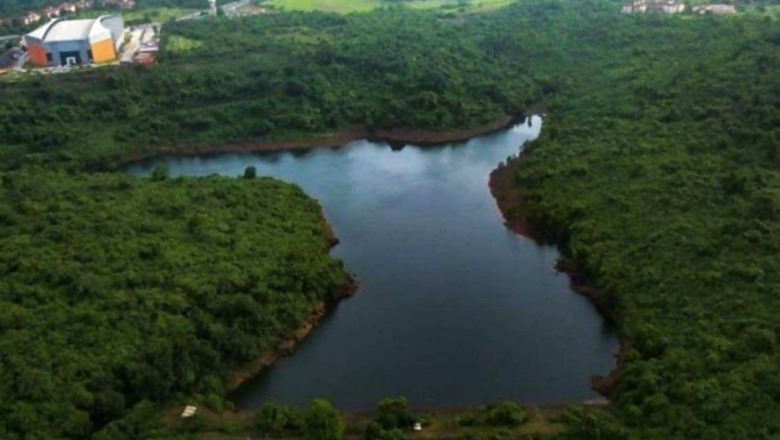
views
The world has become so aware of climate change and impact of human activities on environment like never before. Rivers which have been instrumental in the development of civilisations were exploited badly for too long, but in recent times, governments, environmentalists, self-help groups and individuals are coming together to rejuvenate rivers. The understanding of river and its entire ecosystem is needed. Namami Gange aims for this and the Ganga rejuvenation project includes tributaries, small rivers, wetlands, floodplain, etc.
One significant component of river rejuvenation is conservation of wetlands. Wetlands are distinct ecosystems which are flooded with water either permanently or seasonally. Wetlands are neither completely land-based habitats nor completely aquatic habitats. They are somewhere in-between. For a long time, the perception of wetlands like marshes, swamps and river meadows etc was of negative habitats (research attributes these issues to demonisation of wetlands in children’s literature). This led to wetlands being ignored or encroached and finally being endangered.
The vision of ‘Ganga Rejuvenation’ is in terms of ensuring aviral and ‘nirmal’ Ganga and also protecting its ecological and geological entity. The healthy wetland can play a major role in this and the basin is dotted with a large number of wetlands of varied nature and sizes. Wetlands are globally important carbon sinks and are important in buffering impacts of climate change.
‘Namami Gange’ mission has been working with several partners such as WWF, WII, state wetland authorities for developing a good inventory, ground verification, integrated management plans (IMP) and their implementation for conservation and protection.
Priority is accorded to conserving both floodplain wetlands and urban wetlands. Floodplains and nearby wetlands are most critical as they can contribute directly to improving river flows. They store rainwater, recharge aquifers and contribute to base flows in rivers during lean season to help maintain continuous flow throughout the year. They also mitigate damage to fields and habitations from excess flow from river. As a unique attempt to scale up wetland conservation to river and basin level, a special Namami Gange project is underway developing IMPs of 226 wetlands within 10km of the Ganga over almost 1,000km length in Uttar Pradesh.
Urban wetlands are important from flood management, ecological improvement of urban areas and potential tourism sites. They are mainly threatened by unplanned urbanisation and development and encroachments. Recently, Hyderabad suffered enormous damage due to flash floods. Such situations can be avoided to a great extent if the urban waterbodies and channels are intact. Wetlands also play a pivotal role in improving biodiversity as they provide habitat to smaller aquatic lives. They are halting places for migratory birds and potential tourist spots.
Wetlands are also natural water purifiers. They act as micro sponges and remove impurities like heavy metal, plastic fibres and in-organic dirt before releasing the water in bigger water bodies. In fact, there are many countries investing in man-made wetlands for this purpose. We are also trying to develop standard operating procedures for constructed wetlands. East Kolkata Wetlands is the most significant example of treatment of about 400 MLD of city wastewater and which includes, salt marshes, agricultural fields and settling ponds and has been declared a Ramsar site.
Namami Gange’s vision is to make our cities river- and water-sensitive. We are developing a new paradigm of planning for river cities and mainstreaming river, urban waterbodies into masterplans in association with National Institute of Urban Affairs. A toolkit for management of Urban Wetlands has been developed through School of Planning & Architecture, New Delhi.
Working with MoEF&CC, state wetland authorities are being strengthened in Ganga basin and states are encouraged to notify wetlands and also work for recognition as Ramsar Sites. In 2020, out of a total of 14 sites declared in India, 9 Ramsar sites have been declared in UP. Uttarakhand and Bihar. There are many wetland sites declared as Ramsar sites in Uttar Pradesh, Uttarakhand and Bihar. Sur Sagar Keetham, Kabar Taal and Aasan are the latest ones. As of now, there are 42 Ramsar sites in India with 16 in Ganga Basin.
Scientific information is available in plenty on wetlands, regulatory frame work also exist, but what is needed is strengthening these at grass root level and community participation with increased awareness. This World Wetland Day, we are focussing on capacity building and experience sharing of DGCs, community volunteers working for Ganga Rejuvenation, connecting students and youth through quiz, and releasing toolkits, guidelines on the subject of wetland and river conservation.
(The author is Director General, National Mission for Clean Ganga. Views are personal)
Read all the Latest News, Breaking News and Coronavirus News here




















Comments
0 comment